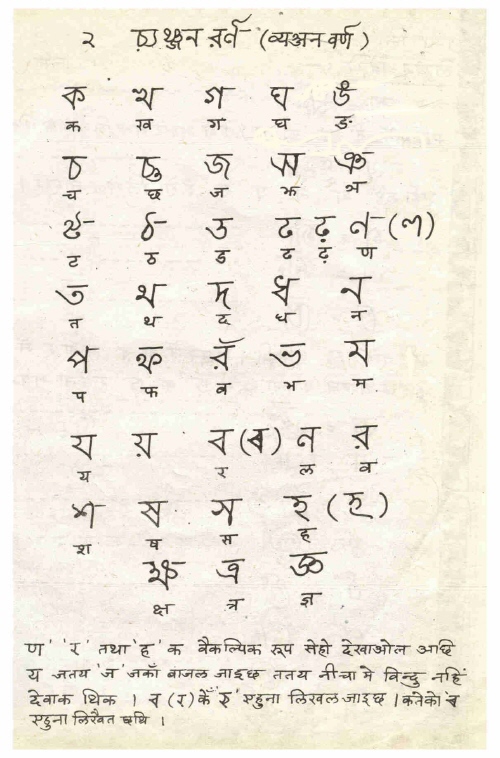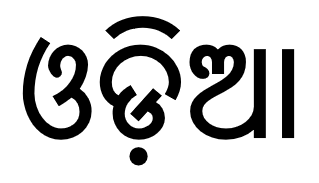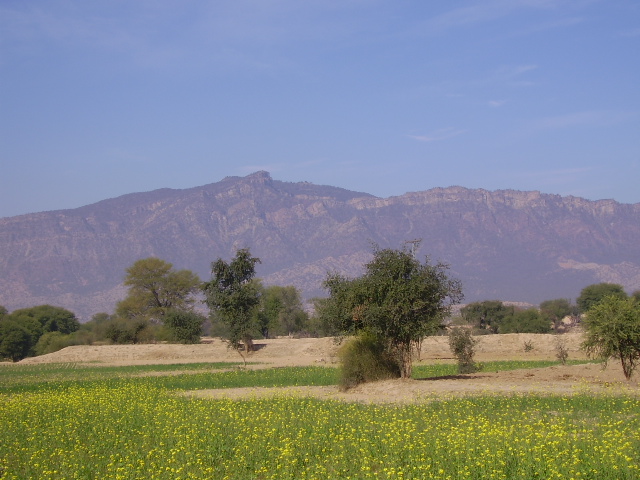|
Dramatic Prakrit
Dramatic Prakrits were those standard forms of Prakrit dialects that were used in dramas and other literature in medieval India. They may have once been spoken languages or were based on spoken languages, but continued to be used as literary languages long after they ceased to be spoken. Dramatic Prakrits are important for the study of the development of Indo-Aryan languages, because their usage in plays and literature is always accompanied by a translation in Sanskrit. Dialects The phrase "Dramatic Prakrits" often refers to the three most prominent of them, Shauraseni, Magadhi and Maharashtri Prakrit. However, there were a slew of other less commonly used Prakrits that also fall into this category. These include Prācya, Bahliki, Dakshinatya(spoken in modern day states of Karnataka, Andhra pradesh, Telangana and Maharashtra) , Sakari, Candali, Sabari, Abhiri, Dramili Prakrit, and Odri. There was an astoundingly strict structure to the use of these different Prakrits in dramas. C ... [...More Info...] [...Related Items...] OR: [Wikipedia] [Google] [Baidu] |
Prakrit
The Prakrits (; sa, prākṛta; psu, 𑀧𑀸𑀉𑀤, ; pka, ) are a group of vernacular Middle Indo-Aryan languages that were used in the Indian subcontinent from around the 3rd century BCE to the 8th century CE. The term Prakrit is usually applied to the middle period of Middle Indo-Aryan languages, excluding earlier inscriptions and the later Pali. ''Prākṛta'' literally means "natural", as opposed to '' saṃskṛta'', which literally means "constructed" or "refined". Prakrits were considered the regional spoken (informal) languages of people, and Sanskrit was considered the standardized (formal) language used for literary, official and religious purposes across Indian kingdoms of the subcontinent. Literary registers of Prakrits were also used contemporaneously (predominantly by śramaṇa traditions) alongside Classical Sanskrit of higher social classes. Etymology The dictionary of Monier Monier-Williams (1819–1899), and other modern authors however, interpr ... [...More Info...] [...Related Items...] OR: [Wikipedia] [Google] [Baidu] |
Indo-Aryan Languages
The Indo-Aryan languages (or sometimes Indic languages) are a branch of the Indo-Iranian languages in the Indo-European language family. As of the early 21st century, they have more than 800 million speakers, primarily concentrated in India, Pakistan, Bangladesh, Nepal, Sri Lanka, and Maldives. Moreover, apart from the Indian subcontinent, large immigrant and expatriate Indo-Aryan–speaking communities live in Northwestern Europe, Western Asia, North America, the Caribbean, Southeast Africa, Polynesia and Australia, along with several million speakers of Romani languages primarily concentrated in Southeastern Europe. There are over 200 known Indo-Aryan languages. Modern Indo-Aryan languages descend from Old Indo-Aryan languages such as early Vedic Sanskrit, through Middle Indo-Aryan languages (or Prakrits). The largest such languages in terms of first-speakers are Hindi–Urdu (),Standard Hindi first language: 260.3 million (2001), as second language: 120 million (199 ... [...More Info...] [...Related Items...] OR: [Wikipedia] [Google] [Baidu] |
Ardhamāgadhī Prākrit
Ardhamagadhi Prakrit was a Middle Indo-Aryan language and a Dramatic Prakrit thought to have been spoken in modern-day Bihar and Uttar Pradesh and used in some early Buddhist and Jain drama. It was likely a Central Indo-Aryan language, related to Pali and the later Sauraseni Prakrit. It was originally thought to be a predecessor of the vernacular Magadhi Prakrit, hence the name (literally "half-Magadhi"). Relationship with Pali Theravada Buddhist tradition has long held that Pali was synonymous with Magadhi and there are many analogies between it and ', literally 'half-Magadhi'. was prominently used by Jain scholars and is preserved in the Jain Agamas. Both Gautama Buddha and the tirthankara Mahavira preached in the region of Magadha. Ardhamāgadhī differs from later Magadhi Prakrit on similar points as Pāli. For example, Ardhamāgadhī preserves historical unlike later Magadhi, where changed into Additionally, in the noun inflection, Ardhamagadhi shows the ending oinste ... [...More Info...] [...Related Items...] OR: [Wikipedia] [Google] [Baidu] |
Maithili Language
Maithili () is an Indo-Aryan language spoken in parts of Languages of India, India and Languages of Nepal, Nepal. It is native to the Mithila region, which encompasses parts of the Indian states of Bihar and Jharkhand as well as Nepal's eastern Terai. It is one of the 22 Eighth Schedule to the Constitution of India, officially recognised languages of India and the second most spoken Languages of Nepal, Nepalese language in Nepal. The language is predominantly written in Devanagari, but there were two other historically important scripts: Tirhuta script, Tirhuta, which has retained some use until the present, and Kaithi script, Kaithi. Official status In 2003, Maithili was included in the 8th Schedule, Eighth Schedule of the Indian Constitution as a recognised language of India, Indian language, which allows it to be used in education, government, and other official contexts in India. Maithili language is included as an optional paper in the Union Public Service Commission, UP ... [...More Info...] [...Related Items...] OR: [Wikipedia] [Google] [Baidu] |
Magahi Language
The Magahi language (), also known as Magadhi (), is a language spoken in Bihar, Jharkhand and West Bengal states of eastern India, and in the Terai of Nepal. Magadhi Prakrit was the ancestor of Magahi, from which the latter's name derives. It has a very rich and old tradition of folk songs and stories. It is spoken in nine districts of Bihar (Gaya, Patna, Jehanabad, Aurangabad, Nalanda, Sheikhpura, Nawada, Lakhisarai, Arwal), eight districts of Jharkhand ( Hazaribag, Palamu, Chatra, Koderma, Jamtara, Bokaro, Dhanbad, Giridih) and in West Bengal's Malda district. There are around 20,700,000 speakers of Magahi, including speakers 12 million Magahi and 8 million Khortha which is considered a dialect of Magahi. Magahi derived from the ancient Magadhi Prakrit, which was created in the ancient kingdom of Magadha, the core of which was the area south of the Ganges and east of Son River. Though the number of speakers in Magahi is about 12.6 million, it h ... [...More Info...] [...Related Items...] OR: [Wikipedia] [Google] [Baidu] |
Bihari Languages
Bihari is a group of the Indo-Aryan languages. The Bihari languages are mainly spoken in the Indian states of Bihar, Jharkhand, West Bengal and Uttar Pradesh and also in Nepal.Brass, Paul R. (1974). ''Language, Religion and Politics in North India''. Cambridge University Press. The most widely spoken languages of the Bihari group are Bhojpuri, Magahi and Maithili. Despite the large number of speakers of these languages, only Maithili has been constitutionally recognised in India, which gained constitutional status via the 92nd amendment to the Constitution of India, of 2003 (gaining assent in 2004). Both Maithili and Bhojpuri have constitutional recognition in Nepal. Bhojpuri is also official in Fiji as Fiji Baat. There are demands for including Bhojpuri in the 8th schedule of Indian constitution. In Bihar, Hindi is the language used for educational and official matters. These languages were legally absorbed under the overarching label Hindi in the 1961 Census. Such stat ... [...More Info...] [...Related Items...] OR: [Wikipedia] [Google] [Baidu] |
Odia Language
Odia (, ISO: , ; formerly rendered Oriya ) is an Indo-Aryan language spoken in the Indian state of Odisha. It is the official language in Odisha (formerly rendered Orissa), where native speakers make up 82% of the population, and it is also spoken in parts of West Bengal, Jharkhand, Andhra Pradesh and Chhattisgarh. Odia is one of the many official languages of India; it is the official language of Odisha and the second official language of Jharkhand. The language is also spoken by a sizeable population of 700,000 people in Chhattisgarh. Odia is the sixth Indian language to be designated a classical language, on the basis of having a long literary history and not having borrowed extensively from other languages. The earliest known inscription in Odia dates back to the 10th century CE. History Odia is an Eastern Indo-Aryan language belonging to the Indo-Aryan language family. It descends from Odra Prakrit, which evolved from Magadhi Prakrit, which was spoken in east I ... [...More Info...] [...Related Items...] OR: [Wikipedia] [Google] [Baidu] |
Assamese Language
Assamese (), also Asamiya ( ), is an Indo-Aryan language spoken mainly in the north-east Indian state of Assam, where it is an official language, and it serves as a ''lingua franca'' of the wider region. The easternmost Indo-Iranian language, it has over 23 million speakers. Nefamese, an Assamese-based pidgin, is used in Arunachal Pradesh, and Nagamese, an Assamese-based Creole language, is widely used in Nagaland. The Kamtapuri language of Rangpur division of Bangladesh and the Cooch Behar and Jalpaiguri districts of India are linguistically closer to Assamese, though the speakers identify with the Bengali culture and the literary language. In the past, it was the court language of the Ahom kingdom from the 17th century. Along with other Eastern Indo-Aryan languages, Assamese evolved at least before the 7th century CE from the middle Indo-Aryan Magadhi Prakrit. Its sister languages include Angika, Bengali, Bishnupriya Manipuri, Chakma, Chittagonian, Hajong, ... [...More Info...] [...Related Items...] OR: [Wikipedia] [Google] [Baidu] |
Bengali Language
Bengali ( ), generally known by its endonym Bangla (, ), is an Indo-Aryan language native to the Bengal region of South Asia. It is the official, national, and most widely spoken language of Bangladesh and the second most widely spoken of the 22 scheduled languages of India. With approximately 300 million native speakers and another 37 million as second language speakers, Bengali is the fifth most-spoken native language and the seventh most spoken language by total number of speakers in the world. Bengali is the fifth most spoken Indo-European language. Bengali is the official and national language of Bangladesh, with 98% of Bangladeshis using Bengali as their first language. Within India, Bengali is the official language of the states of West Bengal, Tripura and the Barak Valley region of the state of Assam. It is also a second official language of the Indian state of Jharkhand since September 2011. It is the most widely spoken language in the Andaman and Nic ... [...More Info...] [...Related Items...] OR: [Wikipedia] [Google] [Baidu] |
Punjabi Language
Punjabi (; ; , ), sometimes spelled Panjabi, is an Indo-Aryan languages, Indo-Aryan language of the Punjab, Punjab region of Pakistan and India. It has approximately 113 million native speakers. Punjabi is the most widely-spoken first language in Pakistan, with 80.5 million native speakers as per the 2017 Census of Pakistan, 2017 census, and the 11th most widely-spoken in India, with 31.1 million native speakers, as per the 2011 Census of India, 2011 census. The language is spoken among a Punjabi diaspora, significant overseas diaspora, particularly in Canada, the United States, and the United Kingdom. In Pakistan, Punjabi is written using the Shahmukhi alphabet, based on the Persian alphabet, Perso-Arabic script; in India, it is written using the Gurmukhi, Gurmukhi alphabet, based on the Brahmic scripts, Indic scripts. Punjabi is unusual among the Indo-Aryan languages and the broader Indo-European languages, Indo-European language family in its usage of Tone (linguistics) ... [...More Info...] [...Related Items...] OR: [Wikipedia] [Google] [Baidu] |
Middle Kingdoms Of India
The middle kingdoms of India were the political entities in the Indian subcontinent from 200 BCE to 1200 CE. The period begins after the decline of the Maurya Empire and the corresponding rise of the Satavahana dynasty, starting with Simuka, from 230 BCE. The "middle" period lasted for about 1,500 years and ended in 1200 CE, with the rise of the Delhi Sultanate, founded in 1206, and the end of the Later Cholas (Rajendra Chola III, who died in 1279 CE). This period encompasses two eras: Classical India, from the Maurya Empire up until the end of the Gupta Empire in 500 CE, and early Medieval India from 500 CE onwards. It also encompasses the era of classical Hinduism, which is dated from 200 BCE to 1100 CE. From 1 CE until 1000 CE, India's economy is estimated to have been the largest in the world, having between one-third and one-quarter of the world's wealth. It is followed by the late Medieval period in the 13th century. The Northwest During the 2nd century BCE, ... [...More Info...] [...Related Items...] OR: [Wikipedia] [Google] [Baidu] |








